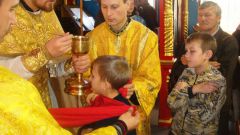Instruction
1
Communion short forms have the endings: zero, "a", "o", "s" ("and"). As in the case with the adjective, the short form is only possible in the nominative case: convinced, convinced, convinced, convinced.
2
The full form of the ending "th", "th", "th", "th" and soft options also accompany the nominative case. The sacrament itself answers the question: "what?" "what made?" or similar: covered-up traces, a runaway cat, a broken mirror, silent jury.
3
For the object characteristic endings: "yy" or "wow", "th", "th", "th" or "s" depending on the noun. If it is inanimate, the form coincides with the nominative case, but the context explains: remove the broken mirror, humming to close the tap, to stir up the awakened people.
4
The genitive is determined by the endings "wow" (for masculine and neuter), "th", "th": no frozen water, no deep snow, no falling snow. Possible mild forms of completion. For the plural form, accusative (in some cases), genitive and prepositional cases are the same. For precise definitions please refer to the noun, which depends on the sacrament: dead soldiers – dead soldiers.
5
Dative can be determined by the endings "WMD", "th", "th" and soft options. Please note that in this case the plural form coincides with the masculine singular of the instrumental case: his glowering in the morning – his glowering friends. In this case, the case is determined not only by the ending, but also a noun.
6
The instrumental case is characterized by the endings: "th", "th", "bubbled" and soft options: ALGID fingers, bloodshot eyes. Please note that the feminine form of the genitive, dative, instrumental and prepositional cases are the same. The end, pay attention to the noun: the frozen hands and a frozen hand.
7
For prepositional characteristic of the end of "th", "th", "th". A characteristic feature of this case is that it is not used without a preposition. However, if you find communion with the preposition, not in a hurry: verify the appropriate forms and noun.



